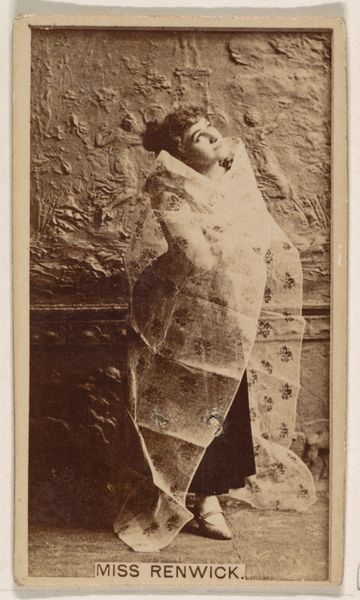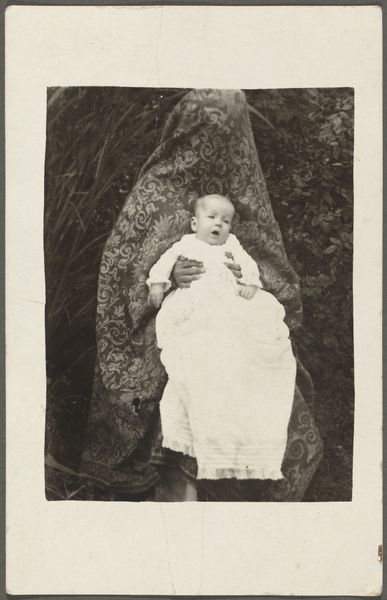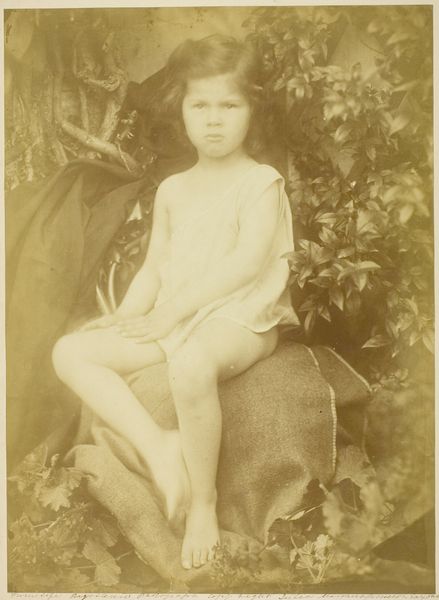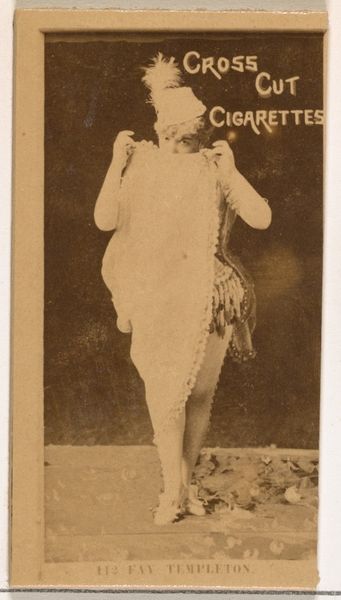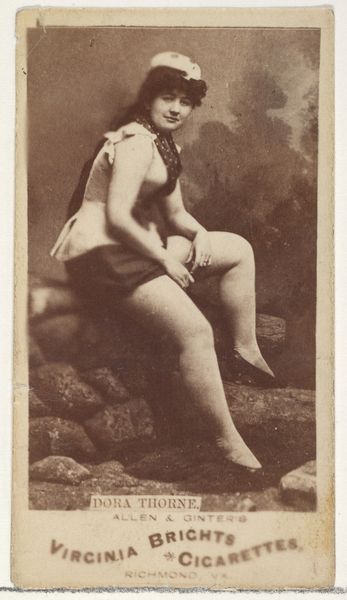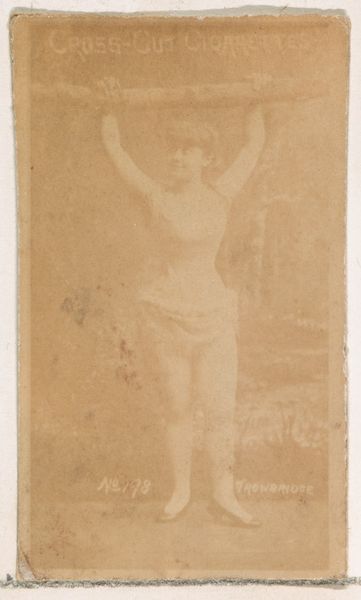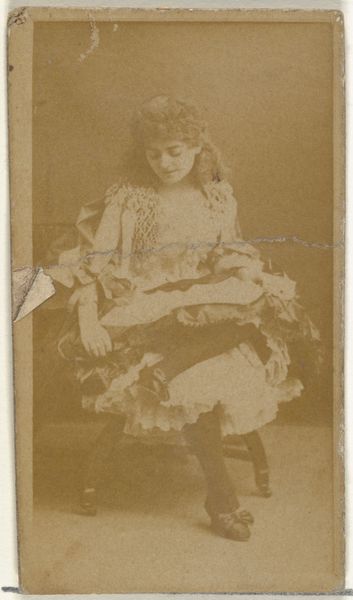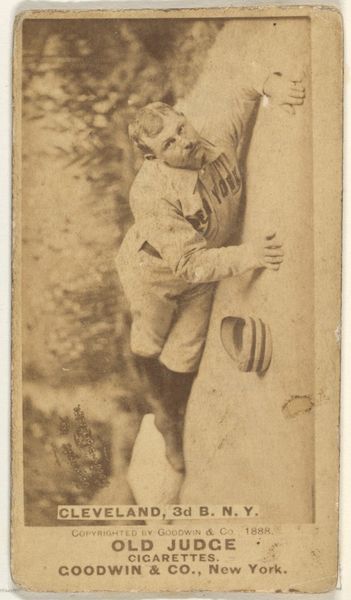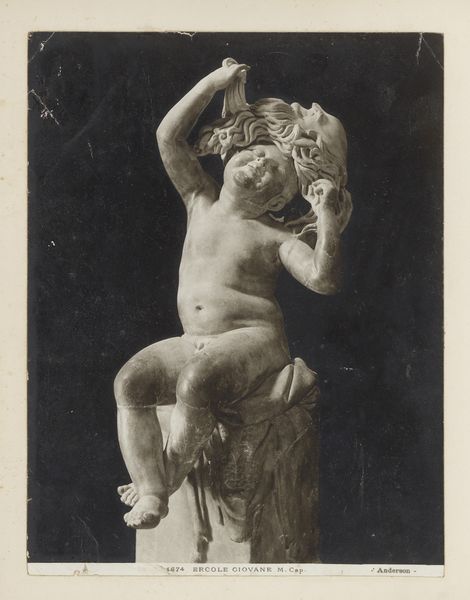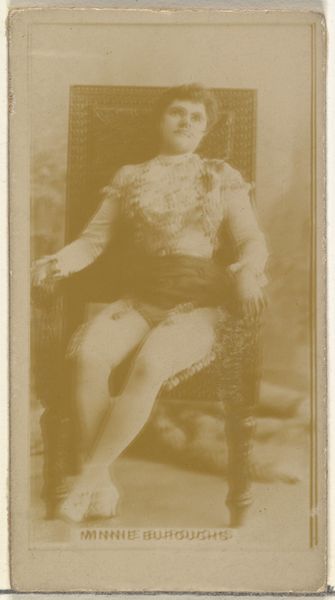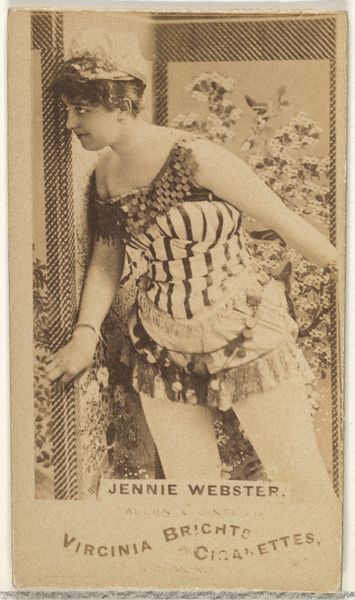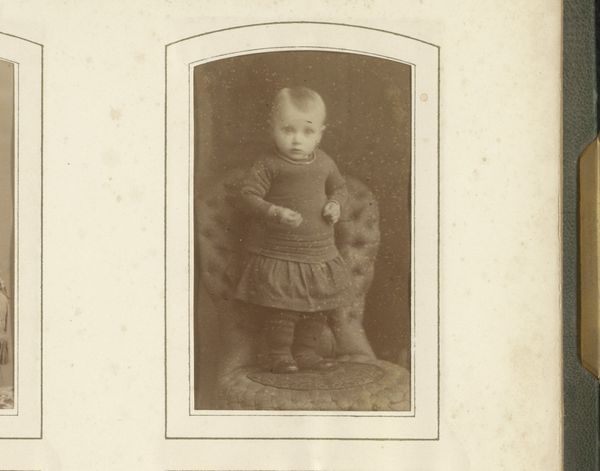
Dimensions: 20.7 × 13.7 cm (image/paper); 36.1 × 29 cm (hinged matte board)
Copyright: Public Domain
Curator: What a striking work of art. This is Gertrude Kasebier's "Mother and Child," created around 1899. As a key figure in pictorialism, Kasebier explored the nuances of photographic printing techniques. Editor: Wow, the mood of this image just washes over you, doesn't it? It's got this dreamy, hazy feel, like a half-remembered lullaby. And the light! It's all soft edges and muted tones, like everything's being seen through a silk veil. Curator: Exactly. Kasebier often manipulated her negatives and printing processes to achieve that aesthetic. We see echoes of Impressionism, but with photography used in service to broader conversations around gender, motherhood, and domesticity. The relationship is almost pre-oedipal. Editor: Interesting point! The softness really highlights the intimate connection between mother and child. It's more of an emotional reality, or a memory—less a portrait of two individuals and more an exploration of their linked identity. I’m guessing it flew in the face of more rigidly composed photography that was popular back then? Curator: Absolutely. While Victorian norms dictated very staged, formal portraits, pictorialists like Kasebier challenged this approach. The mother’s face is partially obscured, turning her into an almost archetypal figure. The child is centered, self-possessed. She offers an intersectional representation of identity, navigating tensions between motherhood, autonomy, and creative expression. Editor: She's owning her space in this world. I can relate! I find myself wondering who they were, imagining the stories woven into their lives. It reminds me of gazing through an old photo album found in an attic—the lives captured in black and white whisper from the past, a connection made through shared humanity. Curator: I see how her art continues to spark that empathy. Kasebier successfully challenged the conventions of photography. She used its malleable quality as a tool for profound, artful expression. Editor: For me, the blurry effect and gentle contrast is really appealing, kind of saying that nothing's crystal clear. Makes it more profound, really, more open to your feelings about it. Curator: Indeed, Kasebier gives us an enduring symbol, an icon of a crucial connection that transcends the bounds of representation itself.
Comments
No comments
Be the first to comment and join the conversation on the ultimate creative platform.
